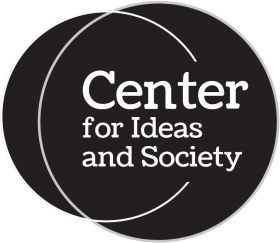Sharon Daniel
Digital Arts and New Media, University of California, Santa Cruz
Presentation: EXPOSED: Documenting COVID-19 in the criminal punishment system
This hybrid paper/artist presentation will focus on the interactive documentary EXPOSED [https://unjustlyexposed.com], conceived in a state of ‘emergency,’ to provide a cumulative public record and evolving history of the coronavirus pandemic’s impact on incarcerated people. EXPOSED, documents the spread of COVID-19, over time, inside prisons, jails, and detention centers across the US, from the perspective of prisoners and their families. Original interviews, combined with quotes, audio clips and statistics collected from a comprehensive array of online publications and broadcasts, are assembled into an interactive timeline that, on each day, offers abundant testimony to the risk and trauma prisoners experience under coronavirus quarantine. EXPOSED launched on October 30, 2020 and will continue to be updated on a weekly basis until the pandemic crisis in carceral spaces across the US is resolved. The scale of the project is intended to reflect the scale of the crisis. For July 8th alone, the timeline includes over 100 statements made by prisoners afflicted with the virus or enduring anxiety, distress, and neglect. The monochrome, image-less, headline-styled interface, which allows viewers to step through thousands of prisoners’ statements, is designed to visualize their collective suffering, signal that the injustices they endure are structural, and demonstrate that the criminal punishment system in the US, itself, constitutes a public health crisis.
Sharon Daniel is a media artist who produces interactive and participatory documentaries focused on issues of social, economic, environmental and criminal justice. She builds online archives and interfaces that make the stories of marginalized and disenfranchised communities available across social, cultural and economic boundaries. Daniel’s work has been exhibited internationally as well as on the internet. Most recently, a solo exhibition titled “Convictions” at STUK Kunstcentrum, Belgium presented the body of new media documentary work she has produced over the last 14 years, addressing the troubled intersection of criminal and social justice. Each of the five works in CONVICTIONS examines various aspects of the criminal justice system through first hand testimony and evidence given by impacted individuals. Detailed descriptions and links to these works can be found at http://sharondaniel.net.
Daniel’s works have been shown in museums and festivals such as WRO media art biennial 2011 (Poland), Artefact 2010 (Belgium), Transmediale 08 (Germany), the ISEA/ZeroOne festival (2006 and 2010), the Dutch Electronic Arts Festival DEAF03 (Netherlands), Ars Electronica (Austria), the Lincoln Center Festival (NY/USA), the Corcoran Biennial (Washington DC) and the University of Paris I (France). Her essays have been published in books including Context Providers (Intellect Press 2011), Database Aesthetics (Minnesota University Press 2007) and the Sarai Reader05 as well as in professional journals such as Cinema Journal, Leonardo and Springerin. Daniel was awarded the prestigious Rockefeller/Tribeca Film Festival New Media Fellowship in 2009 and honored by the Webby Awards in 2008. She is a Professor in the Film and Digital Media Department and the Digital Arts and New Media MFA program at the University of California, Santa Cruz where she teaches classes in digital media theory and practice.
http://www.sharondaniel.net




